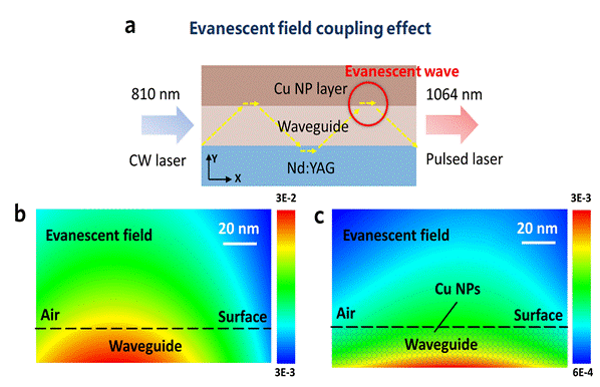In recent years, ultrafast pulsed lasers have attracted great attention because of the superior performance of the narrow pulse width, fast response time, and high peak powers. Particularly, mode-locked lasers with high repetition rates, such as gigahertz (GHz) lasers, have been widely used in a number of photonic systems such as high-speed communication, biological imaging, and nonlinear microscope.
Generally, traditional ultrafast lasers consist of the pump source, resonant cavity, gain medium, and saturable absorber (SA). Among them, saturable absorber is the key element to obtain passive mode-locking laser, and the most popular ones are the SESAM and two-dimensional materials. Nevertheless, it is still very challenging to find cost-effective, stable, and broadband SA materials for laser devices and systems.
Recently, metallic nanoparticles become one of the promising candidates for SA materials, benefited from their localized surface plasmon resonance (LSPR) effect, which provides an alternative option for SA-based lasing. Ion implantation can be used to synthesize metallic nanoparticles embedded in various dielectrics. The combination of optical waveguide and metal nanoparticles in single laser crystals makes the high integration of laser gain medium and SA possible, offering intriguing potential for development of novel integrated photonics devices.
Prof. Feng Chen's research group from Shandong University published their latest progress in Chinese Optics Letters, Volume 19, Issue 2, 2021 (C. Pang, et al., Multi-gigahertz laser generation based on monolithic ridge waveguide and embedded copper nanoparticles) about a novel implementation method of 1 μm gigahertz monolithic optical waveguide laser. This work used ion implantation technology to sequentially implant C4+ ions and Cu+ ions on the Nd:YAG crystal. Combined with precise diamond blade dicing, the integration of ridge optical waveguides and Cu nanoparticles was achieved. Based on the evanescent field coupling effect, 1 μm Q-switched mode-locked waveguide laser was successfully obtained under 810 nm optical excitation. The repetition frequency and the pulse width were measured to be 7.8 GHz and 24.8 ps, respectively. Compared with the previously reported traditional pulsed laser preparation method, this work highly integrated the laser preparation system by confining laser and embedding the saturable absorber into the waveguide with size of several micrometers at the same time which makes the novel photonic devices stable and efficient for long-term work. Researchers believe that this method has great scalability while it can realize the construction of different types of integrated photonics devices by simply replacing the laser crystals, implantation energy and the doses. In addition, the method is environmentally friendly, pollution-free and low cost. It can also be processed in batches, which shows the potential for manufacturing and commercialization.
The future work will focus on further optimizing the laser preparation system, improving the performance of the laser, and achieving high-performance fully mode-locked lasing. In addition, integrated photonics devices based on metal nanoparticles and optical waveguides will also be explored.

(a) Schematic of evanescent field coupling effect. (b) Near-field distribution of the sample without Cu NPs. (c) Near-field distribution of the sample with Cu NPs.


